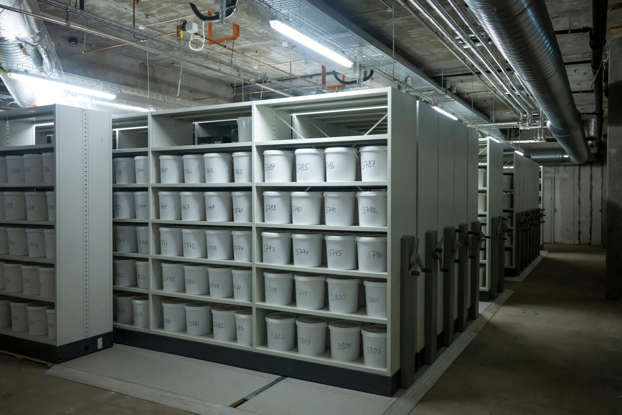Revealed! Inside Creepy Danish Warehouse Where 10,000 Human Brains Are Kept In Giant Tubs

Denmark’s brain warehouse, where brains are filed and stored in containers, has been the feature of a new documentary.
Last year, CNN had a look into the secretive department where brains were taken from patients with mental health issues such as schizophrenia and depression.
One patient, Kirsten Abildtrup, born in 1927, had her brain taken from her without her consent after she died in a mental hospital.
Abildtrup was diagnosed with schizophrenia at the end of World War Two and admitted to a new facility built to cope with the rising number of mental health cases. She, unfortunately, passed away after her admission.
At the time there was a limited understanding of mental health so two new doctors, Erik Stromgren and Larus Einarson, devised a plan to take the brains of the ill patients during their autopsies and store them.
Thomas Erslev, historian of medical science and research consultant at Aarhus University, estimated that about half of all psychiatric patients in Denmark who died between 1945 and 1982 contributed their brains. This was also done without permission from the patients or families.
The department grew and became known as the Institute of Brain Pathology, connected to the Risskov Psychiatric Hospital in Aarhus, Denmark.
Later a pathologist names Knud Aage Lorentzen took over the institute.
The final total of brains stored in the facility is 9,476, believed to be the largest collection in the world.
In 2018, the brain collection was moved to another university in the country due to a lack of funding. Pathologist Dr Martin Wirenfeldt Nielsen oversaw the move and the technicalities.
Each individual brain was transferred into new white buckets and preserved in formaldehyde which made it easier to transport. Then the brains are each given an individual number with a black pen to distinguish them.
A few brains aren’t able to be located, including number one.
The brains were then moved to their new basement room on a University campus.
There are now nearly 10,000 buckets in the room. There are roughly 5,500 brains with dementia, 1,400 with schizophrenia, 400 with bipolar, 300 with depression and more.
The collection has also sparked one of the biggest ethical debates in history, with people demanding the brains be put to rest and the families paid compensation. This has been decided against, however.
“There was a discussion back and forth, and one position was that we should destroy the collection – either bury the brains or get rid of them in any other ethical way,” said Knud Kristensen, the director the Danish Association for Mental Health.
“The other position said, okay, we already did harm once. Then the least we can do to those patients and their relatives is to make sure that the brains are used in research.”





